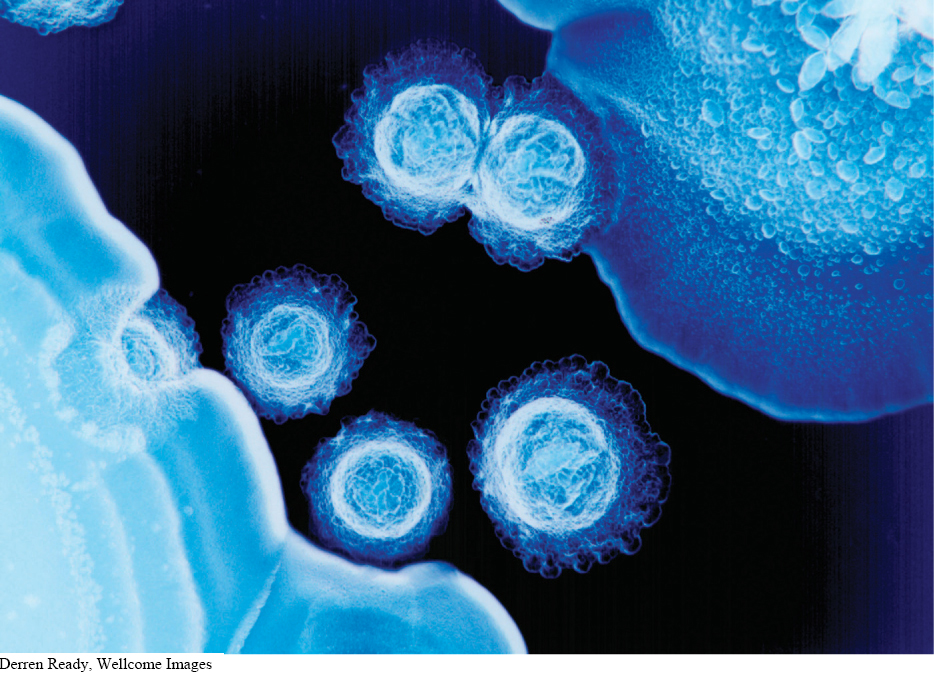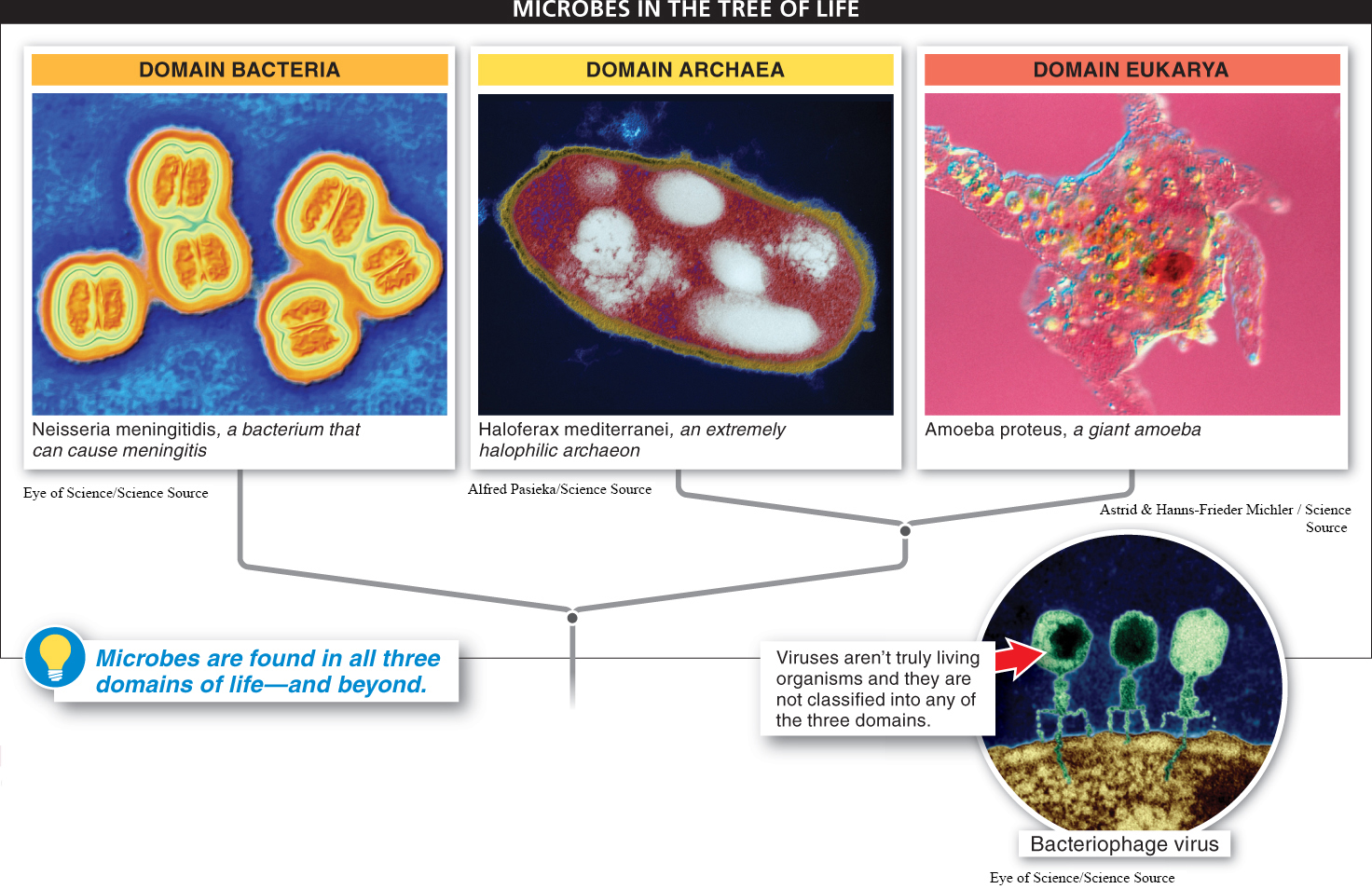
Microbe is an appropriately descriptive name, but it’s sloppy. It is simply a combination of Greek words that means “small life.” We could use “microbe” to point to any one of many different types of organisms too small to see without magnification. In Chapters 3 and 10 we introduced two very different kinds of microbes: bacteria and viruses. In this chapter we explore bacteria and viruses in more detail, and also include two other kinds of microbes—
535
It is hard to make generalizations about microbes, because they are grouped together simply because they are small, not because they all share a recent common ancestor. In fact, microbes occur in all three domains of life—

TAKE-HOME MESSAGE 13.1
Microbes are grouped together only because they are small, not because of evolutionary relatedness. They occur in all three domains of life and also include the viruses, which are not included in any of the domains.
Why is it difficult to make generalizations about microbes? Are all microbes the same?
Due to the great diversity among microbes, it is difficult to make generalizations. Microbes like bacteria, viruses, protists, and the archaea are extremely diverse and do not necessarily share a recent common ancestor. In fact, microbes occur in all 3 domains of life and, therefore, could not be more widely separated.